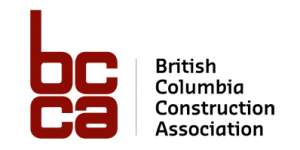Construction File:
BCCA introduces a Guideline for Choosing a Project Delivery Method
The British Columbia Construction Association has developed recommended guidelines for the selection of a project delivery method, in association with its regional offices (BC Construction Association – North, Southern Interior Construction Association, Vancouver Island Construction Association and Vancouver Regional Construction Association).
Selection of the project delivery method is one of the most important decisions affecting the success of a project, and is a decision which needs to be made very early in the process. Owner expertise, capacity and project circumstances each influence the selection of a project delivery mode. Though projects may appear similar, evaluating each project individually can lead to different conclusions on the best project delivery model.
Project size, complexity, innovation, uncertainty, urgency, and the degree of Owner involvement, expertise and capacity each affect delivery method selection and the difficulty of achieving the required results. However, the Owner chooses how much to be directly involved, by either assigning an in-house Project Manager or contracting out much of this role. The Project Manager is the Owner’s representative for delivery of the project, whichever method is selected. The Owner’s in-house resources or, should they decide to contract with a single entity, are responsible for overseeing design, planning, scheduling, project accounting, and coordination and control of construction.
A project delivery system defines the structure of the relationships of the parties, the roles and responsibilities of the parties, and the general sequence of activities required to deliver the project. Regardless of how they are structured, all delivery methods involve three parties: Owner, Consultant and Builder/Constructor.
The relationships, roles, and responsibilities of the parties involved vary considerably under different project delivery systems. The Owner contracts responsibilities and risks to design professionals, builders and specialists, and retains some risks in-house. The main differences among delivery methods lie in:
- contract formation and – most crucially – the parties to whom the various
- responsibilities and risks are assigned;
- the incentives to meet the contract requirements; and,
- the assignments to carry out contract administration and other project management services.
This new BCCA guideline outlines the basic differences and features of each type of construction delivery method, or contractual arrangement, and of advantages and risks inherent with each type.
The construction industry’s health and integrity depends on every qualified firm having an equal opportunity to compete. In the public sector, owners must be diligent in honouring the public trust when choosing project delivery options and must ensure the method chosen is used fairly and properly, to serve the public interest with high-quality, cost-effective and timely construction. Whatever option is utilized, the selection process for construction procurement should be consistent, open, and competitive.


